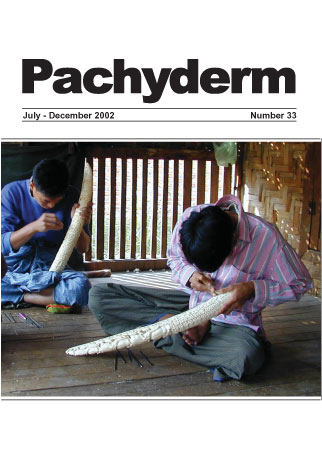The trade in African and Asian ivory in South and South East Asia
Abstract
In late 2000 and early 2001 the authors collected data on the numbers of retail outlets, ivory items, workshops, craftsmen, and the prices of raw and worked ivory in eight south and south east Asia countries: Cambodia, Laos, Myanmar, Nepal, Singapore, Sri Lanka, Thailand and Vietnam. This study serves as a followup to their African review published in 2000. Although all the nations studied except Laos are members of CITES and have domestic laws regarding ivory as well enforcement is weak, 'None of the governments for the countries surveyed have control over the ivory trade'. However, the ivory trade has declined since 1990, largely because the demand for ivory has generally been reduced, except for Thailand where it has probably remained about the same, and Myanmar where it has increased. Results indicate Thailand is the largest market and is fueled mainly by illegal imports of African raw ivory plus some tusks from Myanmar. The wholesale price of raw ivory was higher in 2001 than in the late 1980s and in 2001 the average tusk price in the Asian countries surveyed it was five times higher than in Africa (USD 250 versus USD 45). The authors note 'It is important to stop the illegal ivory sale to tourists and businessmen in the two regions (a earlier reported focused on Africa) in order to reduce elephant poaching in Africa and Asia, especially Cambodia, Laos and Vietnam where wild elephant numbers have declined by over 75% since 1988'. The original reports for both Africa and Asia are in file (Martin and Stiles. 2000: Martin and Stiles 2002).
Downloads
Published
How to Cite
Issue
Section
License
Copyright (c) 2002 Daniel Stiles, Esmond Bradley Martin

This work is licensed under a Creative Commons Attribution-NonCommercial 4.0 International License.




